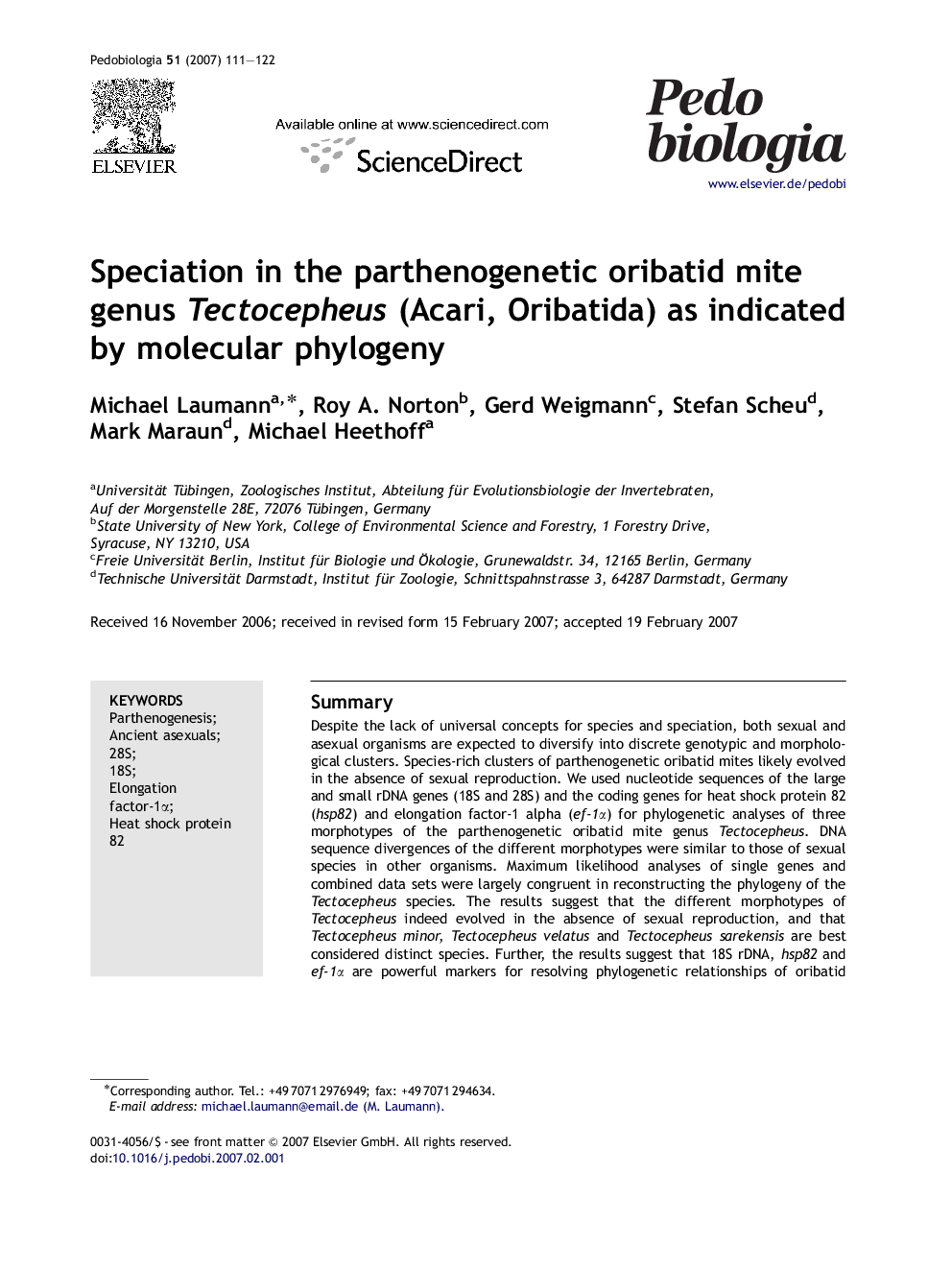| Article ID | Journal | Published Year | Pages | File Type |
|---|---|---|---|---|
| 2061267 | Pedobiologia | 2007 | 12 Pages |
SummaryDespite the lack of universal concepts for species and speciation, both sexual and asexual organisms are expected to diversify into discrete genotypic and morphological clusters. Species-rich clusters of parthenogenetic oribatid mites likely evolved in the absence of sexual reproduction. We used nucleotide sequences of the large and small rDNA genes (18S and 28S) and the coding genes for heat shock protein 82 (hsp82) and elongation factor-1 alpha (ef-1α) for phylogenetic analyses of three morphotypes of the parthenogenetic oribatid mite genus Tectocepheus. DNA sequence divergences of the different morphotypes were similar to those of sexual species in other organisms. Maximum likelihood analyses of single genes and combined data sets were largely congruent in reconstructing the phylogeny of the Tectocepheus species. The results suggest that the different morphotypes of Tectocepheus indeed evolved in the absence of sexual reproduction, and that Tectocepheus minor, Tectocepheus velatus and Tectocepheus sarekensis are best considered distinct species. Further, the results suggest that 18S rDNA, hsp82 and ef-1α are powerful markers for resolving phylogenetic relationships of oribatid mites. Saturation plots indicated that the D3-region of 28S is much more saturated than all other examined genes. This indicates that the D3-region is unsuitable for resolving ancient splits in oribatid mites.
